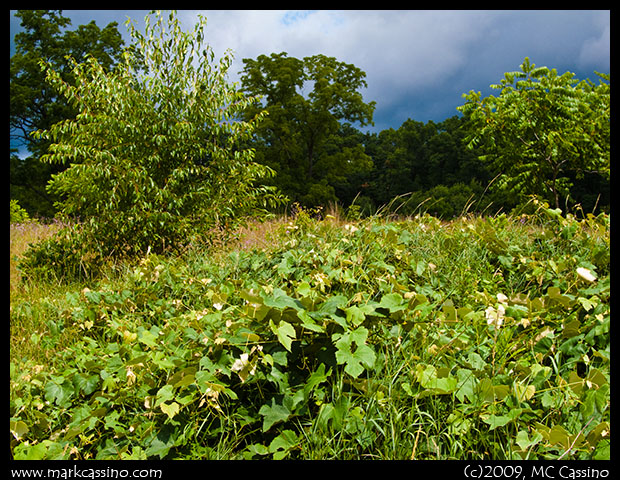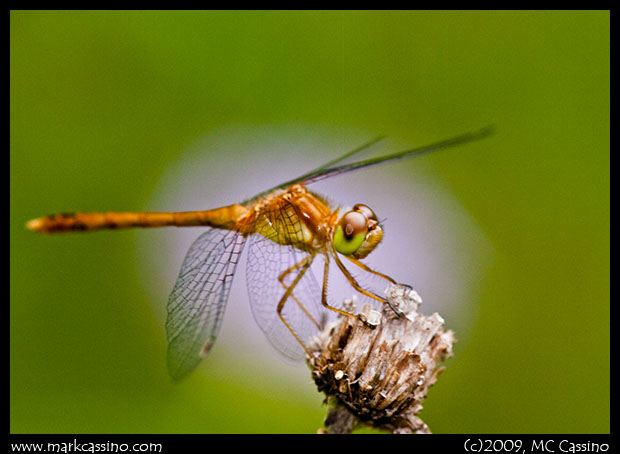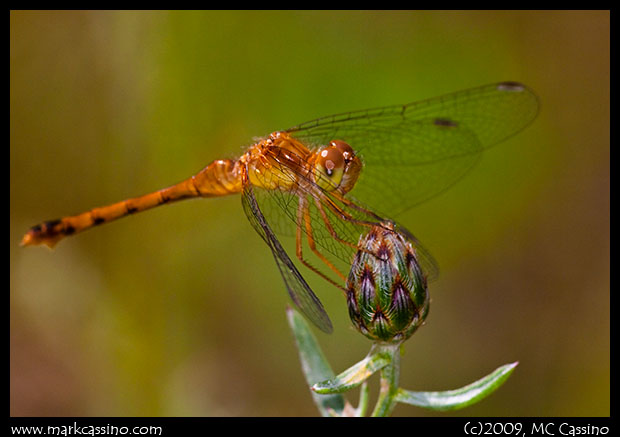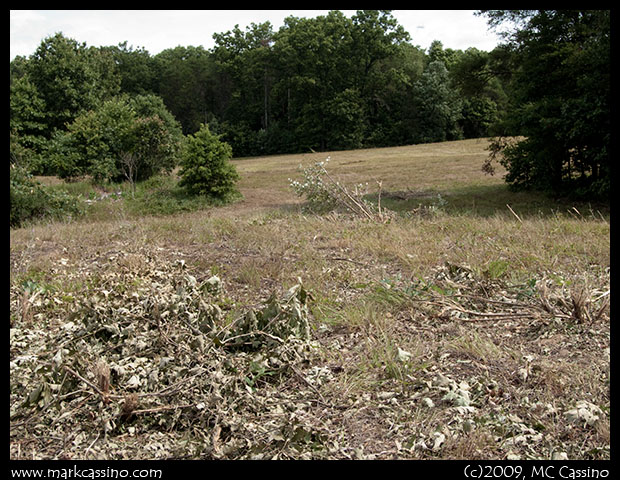The Freshly Mown Field
Flying out of Kalamazoo a few weeks ago, I looked down as the airplane made its way west towards O’Hare. The Allegan Forest stretched out below me, a deep green patch of trees standing defiant among the squares and rectangles and irrigation circles of the neighboring farmland. To my surprise, I was able to spot the field I call the Old Farmstead – an upside down “L” carved out of the forest, with a triangular, pork chop shaped pond at the southern edge. The patches of sandy soil that I know so well stood out – pale, off white blotches against the pale green of the field and the deep green of the forest.
The next weekend I wandered through the field, and looked back at the sky, trying to figure out where I may have been when I looked down onto this very spot. I have no idea. However, despite dry weather these last several weeks, the field was still green. A bit of brown was just beginning to show, but the patches of cactus, wild grapes, knapweed, and wild strawberries were still lush and green.

The weather this year is unusual. It always is. This July just passed has been cool and dry. The air is dazzling clear – like it is in October – and high clouds roil through the skies, always threatening rain but, lately, not making good on that promise.
Dragonflies were abundant. I finally got a chance to give the Pentax K7 a workout and did my best to get some shots of dragonflies with knapweed blooms in the background. I finally took a few hundred shots with this excellent camera – but was disappointed to come home and find a faint light band running vertically through every shot. Apparently, the sensor is defective. Oh well – the defect is invisible in web-sized images, so I will feel free to post the day’s shots. Meanwhile, I am in the process of returning the camera for one that has a sensor that operates correctly.

Meadowhawk Dragonfly with Knapweed in the Background
I should not be kind to Knapweed. It is, after all, an invasive plant. By today’s reckoning it is an undesirable plant. We wish it wasn’t here.
Over the ages, we humans have exercised peculiar logic in how we judge (and condemn) the natural world. In days gone by the calculus that human used to judge the worthiness of the natural world has ranged from the doctrine of signatures, to ideas of economic usefulness, to today’s notions based on whether or not that particular species was part of the ecosystem that was once – but is no longer – in place.
Personally, I’m reluctant to render judgment on a thing that grows up out of the ground, but that’s just me. It seems that those who engage in this calculus of judgment have always considered themselves to be the most knowledgeable of the natural world, the most eager to manage it, the closest and yet most removed from the thing they profess to advocate for. Well – it’s just knapweed, a good place to perch if you are a dragonfly.

This Saturday just past – August 1, 2009 – I returned to the fields. I was sadden to see that the mowing had finally caught up with this location, and the thick knee high vegetation was cropped down to a uniform 3 or 4 inch high fuzz covering the land. Wild grapes, prickly pear cactus, oak saplings, iris leaves all lay chopped together – a grim vegetable hash coating the sandy soil. Most trees less than a few inches in diameter were chopped down in this mowing process, though some individuals were left standing – many badly mauled.

Oh well – I knew this day would come. I first found this spot right after it had been mown. That was four years ago – the land had healed but is now wrenched back to its previous state.
Of course, if this is not done then the land will simply revert to forest. I suppose the mowing is a substitute for the fires that once kept the Pine Barrens from being overgrown. Yeah - it’s a bit of charade. There is no real ecosystem in lower Michigan, or really in most places in the US. The ‘management’ of natural systems is a house of cards balanced on a tight rope. Can we ever manage our way back to the ecosystem that once was in this place – free of invasive species, with rivers flowing the tracks they once travelled?
It seems unlikely. When you can’t go forward and you can’t go back – what is there to do but maintain an artificial normalicy.
I told all this to a red dragon, perched on slim branch near the pond’s edge. He was unimpressed.
